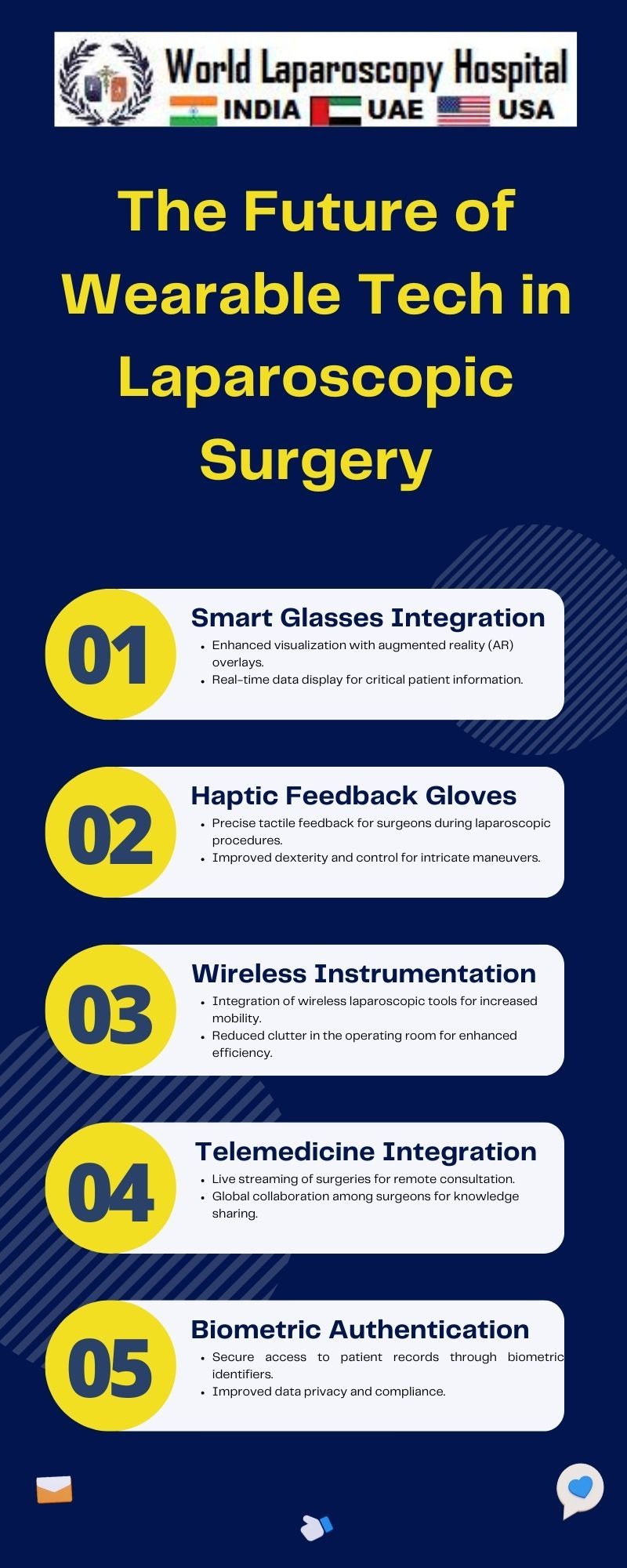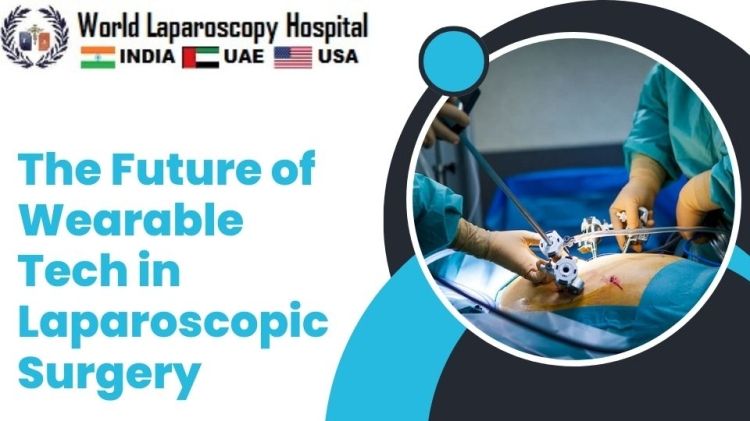The Future of Wearable Tech in Laparoscopic Surgery
Introduction:
In the ever-evolving landscape of medical technology, wearable devices have emerged as a groundbreaking innovation, transforming various aspects of healthcare. One area where wearable tech is poised to make a significant impact is laparoscopic surgery, a minimally invasive technique that has revolutionized surgical procedures. This article delves into the current state of wearable technology in laparoscopic surgery and envisions a future where these devices play a pivotal role in enhancing surgical precision, efficiency, and patient outcomes.

The Current Landscape of Laparoscopic Surgery:
Laparoscopic surgery, also known as minimally invasive surgery, involves making small incisions and using specialized instruments with the assistance of a camera to perform surgical procedures. This technique offers several advantages over traditional open surgery, including shorter recovery times, reduced postoperative pain, and minimal scarring.
However, despite its numerous benefits, laparoscopic surgery is not without challenges. Surgeons face limitations in terms of depth perception, precision, and haptic feedback compared to open surgery. These challenges have spurred the exploration of innovative technologies to address these limitations and elevate the capabilities of laparoscopic procedures.
IWearable Technology in Laparoscopic Surgery: The Current State:
As of now, wearable technology is gradually finding its way into the realm of laparoscopic surgery. Some of the existing applications include:
Smart Glasses for Augmented Reality (AR):
Smart glasses equipped with AR capabilities have been introduced to laparoscopic surgery. These devices overlay important information, such as patient vitals, imaging data, and anatomical structures, directly onto the surgeon's field of view. This enhances situational awareness and facilitates more precise decision-making during the procedure.
Haptic Feedback Devices:
Haptic feedback is crucial for surgeons to perceive the texture and resistance of tissues during surgery. Wearable haptic devices, worn on the hands or fingers, provide tactile feedback, allowing surgeons to feel the resistance encountered during the procedure. This addresses one of the key challenges of laparoscopic surgery – the lack of direct touch.
Wearable Sensors for Motion Tracking:
Motion tracking sensors worn by surgeons capture their movements in real-time. This data can be analyzed to assess and improve surgical techniques. Additionally, motion tracking can be utilized for training purposes, enabling novice surgeons to learn and refine their skills in a controlled environment.
Envisioning the Future: Wearable Tech as a Game-Changer in Laparoscopic Surgery:
The trajectory of technological advancements suggests a future where wearable devices play a central role in laparoscopic surgery. Several potential developments may shape this future:
Advanced Augmented Reality (AR) Integration:
Future wearable devices are likely to feature more advanced AR capabilities. Surgeons may have access to three-dimensional holographic displays that provide a comprehensive and dynamic view of the surgical field. This enhanced visualization can significantly improve depth perception and spatial awareness.
Artificial Intelligence (AI) Assistance:
Integrating AI algorithms into wearable devices can transform laparoscopic surgery. AI can analyze real-time data from various sources, including imaging, patient records, and sensor data, providing surgeons with intelligent insights and decision support. This could lead to more accurate diagnoses, personalized treatment plans, and improved surgical outcomes.
Nanotechnology for Intraoperative Diagnostics:
Wearable devices may incorporate nanotechnology for intraoperative diagnostics. Nanosensors within the surgical instruments could provide instant feedback on the molecular composition of tissues, enabling surgeons to make informed decisions during the procedure. This level of precision could revolutionize the way diseases are diagnosed and treated.
Robotics and Telepresence:
Wearable devices could be seamlessly integrated with robotic surgical systems, allowing surgeons to control robotic instruments through intuitive gestures. Telepresence capabilities could enable expert surgeons to remotely guide and assist less experienced practitioners in real-time, fostering collaborative and cross-disciplinary approaches to surgery.
Biometric Monitoring for Enhanced Patient Safety:
Wearable devices worn by patients before, during, and after surgery could monitor vital signs, track recovery progress, and provide real-time alerts in case of any abnormalities. This continuous biometric monitoring enhances patient safety and allows for timely interventions if complications arise.
Challenges and Ethical Considerations:
While the future of wearable technology in laparoscopic surgery holds immense promise, it is essential to address potential challenges and ethical considerations. Some key considerations include:
Data Security and Privacy:
The integration of wearable devices in surgery generates vast amounts of sensitive patient data. Ensuring robust cybersecurity measures and respecting patient privacy are paramount to the ethical deployment of these technologies.
Regulatory Approval and Standardization:
The development and adoption of wearable devices in surgery require stringent regulatory approval processes and standardized guidelines. Establishing a regulatory framework will ensure the safety and efficacy of these technologies across different healthcare settings.
Surgeon Training and Acceptance:
The successful implementation of wearable technology hinges on the training of surgeons and their acceptance of these devices. Comprehensive training programs and ongoing education are essential to familiarize surgeons with the use of wearable tech and integrate it seamlessly into their practice.
Accessibility and Affordability:
Making advanced wearable technology accessible and affordable is crucial for widespread adoption. Efforts to reduce costs and ensure accessibility in various healthcare settings will determine the inclusivity and impact of these innovations.
Conclusion:
The future of laparoscopic surgery is undeniably intertwined with the evolution of wearable technology. As we navigate the frontier of medical innovation, the integration of wearable devices holds the promise of elevating surgical precision, improving patient outcomes, and reshaping the landscape of healthcare. While challenges and ethical considerations must be addressed, the potential benefits far outweigh the obstacles. In the coming years, we can anticipate a paradigm shift in surgical practices, where wearable technology emerges as an indispensable tool, empowering surgeons and transforming the patient experience.




